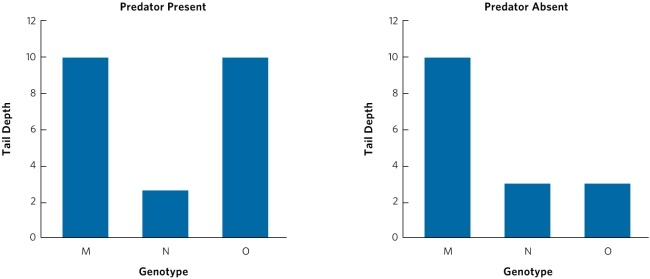Multiple Choice
Use the following graphs and information to answer questions 13, 14, and 15. This figure shows the tail shape developed by three tadpole genotypes (M, N, and O) , when raised in an environment with predators and an environment without predators. In the presence of predators, tadpoles with large tails have high fitness and tadpoles with small tails have low fitness. When predators are not present, tadpoles with large tails have low fitness and tadpoles with small tails have high fitness.

-Which genotype(s) exhibit(s) phenotypic plasticity in response to predators?
A) M only
B) N only
C) O only
D) both M and N
E) both N and O
Correct Answer:

Verified
Correct Answer:
Verified
Q6: The phenotypic plasticity that allows a copepod
Q8: Using an example, describe how the same
Q8: Plants develop trichomes and produce glucosinolates as
Q11: Torpor is beneficial to animals because<br>A) it
Q12: <img src="https://d2lvgg3v3hfg70.cloudfront.net/TB5501/.jpg" alt=" Refer to
Q13: Consider a species of squirrel that eats
Q13: <img src="https://d2lvgg3v3hfg70.cloudfront.net/TB5501/.jpg" alt=" Based on
Q15: What types of plants and animals are
Q39: A fox that catches prey in several
Q44: Environmentally induced changes in an individual's physiology